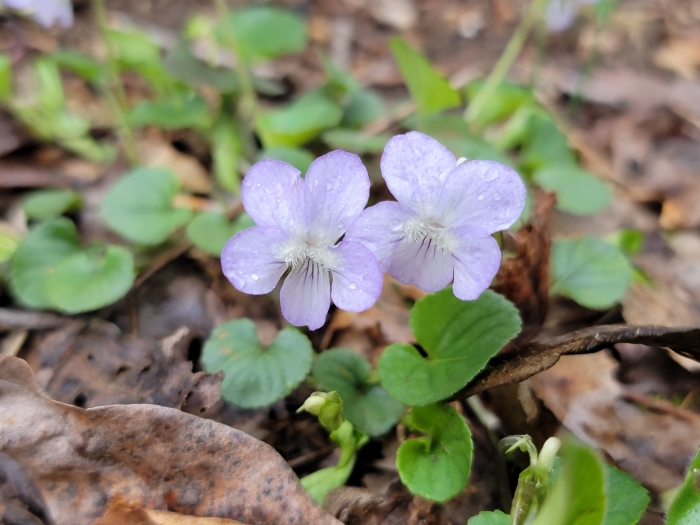Prostrate Blue Violet
(Viola walteri)
Prostrate Blue Violet (Viola walteri)
/
/

Elias
CC BY 4.0
Image By:
Elias
Recorded By:
Copyright:
CC BY 4.0
Copyright Notice:
Photo by: Elias | License Type: CC BY 4.0 | License URL: http://creativecommons.org/licenses/by/4.0/ | Rights Holder: Elias | Publisher: iNaturalist | Date Created: 2021-04-11T14:45:10-07:00 |












































Estimated Native Range
Summary
Viola walteri, commonly known as Prostrate Blue Violet, is a perennial herb that can be evergreen or semi-deciduous depending on the climate. It is native to the understory of deciduous forests and along the edges of woodlands in the Southeastern United States. This violet typically forms low, dense mats of foliage, reaching heights of 2-6 inches (5-15 cm) with a similar spread. The leaves are heart-shaped, and the plant is characterized by its creeping, rooting stolons, which allow it to spread effectively. From March to May, it produces small but showy blue to violet flowers that are attractive to pollinators.
Prostrate Blue Violet is valued for its ground-covering ability and charming flowers, which add a splash of color in the spring garden. It is often used in shaded garden areas, woodland plantings, and naturalized settings. While it prefers part shade, it is adaptable to a range of light conditions and requires minimal water once established, making it a low-maintenance choice for gardeners. It thrives in well-drained soils rich in organic matter. Gardeners should be aware that in optimal conditions, it can spread vigorously, potentially outcompeting less aggressive plants.CC BY-SA 4.0
Prostrate Blue Violet is valued for its ground-covering ability and charming flowers, which add a splash of color in the spring garden. It is often used in shaded garden areas, woodland plantings, and naturalized settings. While it prefers part shade, it is adaptable to a range of light conditions and requires minimal water once established, making it a low-maintenance choice for gardeners. It thrives in well-drained soils rich in organic matter. Gardeners should be aware that in optimal conditions, it can spread vigorously, potentially outcompeting less aggressive plants.CC BY-SA 4.0
Plant Description
- Plant Type: Herb
- Height: 0.1-0.3 feet
- Width: 0.5-1 feet
- Growth Rate: Moderate
- Flower Color: Blue, Purple
- Flowering Season: Spring, Summer, Fall
- Leaf Retention: Deciduous, Evergreen
Growth Requirements
- Sun: Part Shade
- Water: Low
- Drainage: Medium, Fast
Common Uses
Bee Garden, Butterfly Garden, Deer Resistant, Groundcover, Low Maintenance
Natural Habitat
Native to the understory of deciduous forests and along the edges of woodlands in the Southeastern United States
Other Names
Common Names:
Scientific Names: , Viola walteri, Viola walteri var. walteri, Viola muhlenbergii var. multicaulis, Viola canina var. multicaulis, Viola multicaulis,
GBIF Accepted Name: Viola walteri House